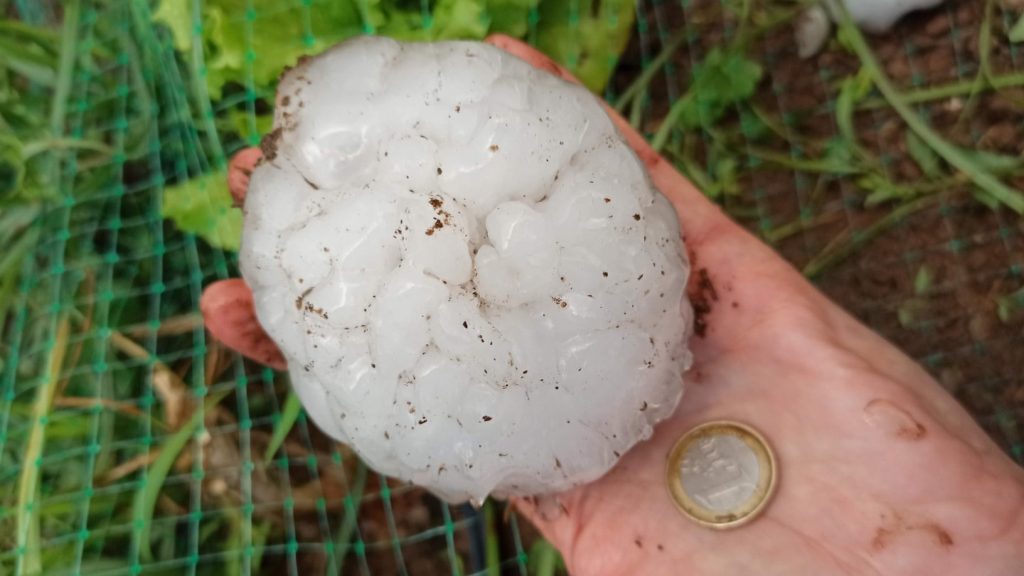A hailstorm struck La Bisbal d’Empordà in Spain on August 31, 2022, with hailstones up to 12 centimeters wide causing widespread damage, injuries, and a toddler’s death. Researchers now suggest in a study published in Geophysical Research Letters that in a preindustrial climate, such massive hailstones could not have been produced.
The storm was suspected to have been influenced by a preceding marine heat wave in the Mediterranean Sea. The heat wave lasted six weeks, raising seawater temperatures by over 3 degrees Celsius above normal, providing ample energy and moisture to the atmosphere, creating optimal conditions for extreme hailstorms.
Computer simulations were utilized to recreate the storm under different climate conditions, such as lowering sea temperatures or reverting atmospheric parameters to preindustrial levels. The results indicated that while the storm would have occurred regardless, only a climate change-influenced environment could have produced hailstones of the size witnessed during the La Bisbal d’Empordà storm.
The study suggests a correlation between climate change, the increasing frequency and intensity of marine heat waves, and the creation of larger, more dangerous hailstones. Historical data on giant hail occurrences show an uptick in their frequency, highlighting the potential impact of climate change on extreme hail events.
Although promising, climate scientist Olivia Romppainen-Martius cautions against drawing direct links between individual hail events and climate change based solely on simulations and historical records. Various factors need consideration for robust attribution, especially when estimating hail size potential and relying on potentially incomplete historical databases.
The research demonstrates a strong association between sea temperature, atmospheric conditions, and giant hail formation. With more intense marine heat waves expected in the future due to climate change, larger hail sizes are also anticipated, necessitating adaptation strategies to mitigate the impact of extreme hailstorms on communities. González-Alemán emphasizes the need for proactive adaptation measures in light of the increasing risks posed by extreme climate events.


